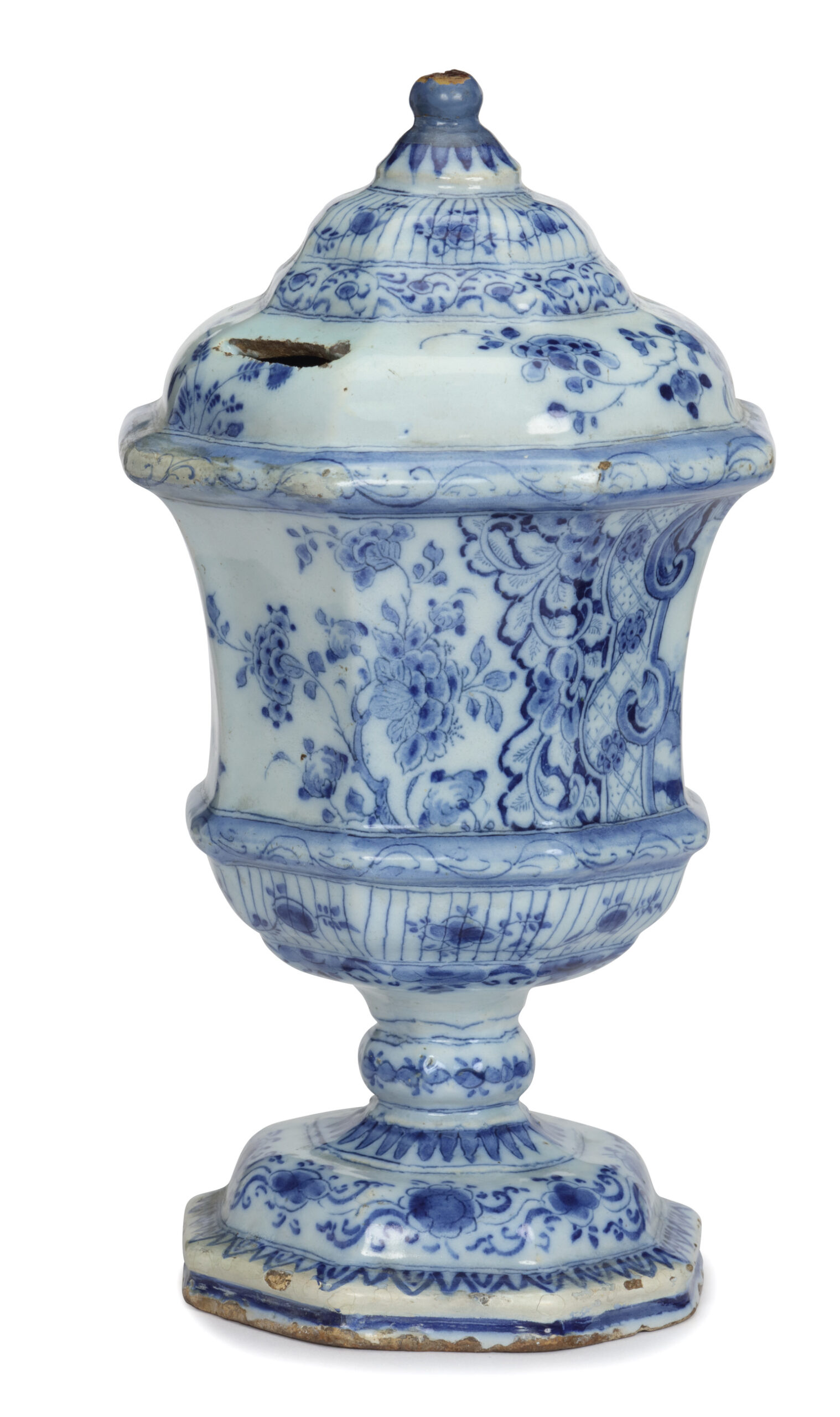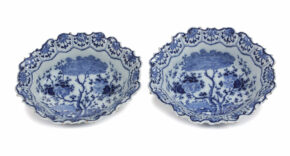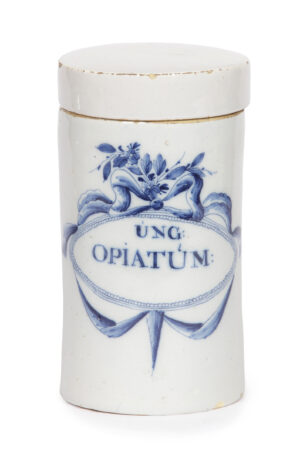![]()
Images on this website are licensed under a
Creative Commons Attribution-NoDerivs 3.0 Unported License.
OBJECT
D2458. Large Blue and White Money Bank
Delft, circa 1760
The octagonal campaniform body painted in blue and white on the front and reverse with flowering branches on one side, the other side depicts a man sitting on a rock looking over his shoulder, in the background a boat and buildings, on the lower body with flowering branches covered by stripes, floral srollwork above the foot, repeated on the domed integral cover reserved with flowering branches interrupted by a pierced coin slot, and surmounted by a blue round knop.
PROVENANCE
French Private Collection, Paris, 2023 (Provenance+)
DIMENSIONS
Height: 26.6 cm. (10.5 in.)
NOTE
The piggy bank originated in the fifteenth century when individuals would utilize pots to store what money they had. At that time, metal was a costly item and rarely used for utilitarian wares. Plates and pots were produced with a low-cost clay material called ‘pygg.’ Any leftover coins would be saved in a ‘pygg’ bank or pot. During the Saxon era, ‘pygg’ was first articulated as ‘pug’, and it eventually transformed into the pronunciation of ‘pig’.
Money banks in the shape of onions have been utilized in the Netherlands since the fourteenth century. This onion-shape is likewise called a mother’s bosom in light of its shape. The round and simple onion shape was simple for potters to produce, and amateur potters likely made these wares as well.
Delftware factories created intricate shapes and varieties of money banks during the seventeenth and eighteenth centuries. The banks, however, are rare to survive as they were either shaken or broken to eliminate the items. Many of the surviving models are dated, suggesting that they were gifts for unique events.
SIMILAR EXAMPLES
A similar blue and white octagonal campaniform- shaped money bank is illustrated in Aronson 2022, p. 62. Two blue and white money banks of similar model are illustrated in Lavino 2002, p. 143 and p. 165, one of which is now in the collection of the Kunstmuseum, The Hague.









